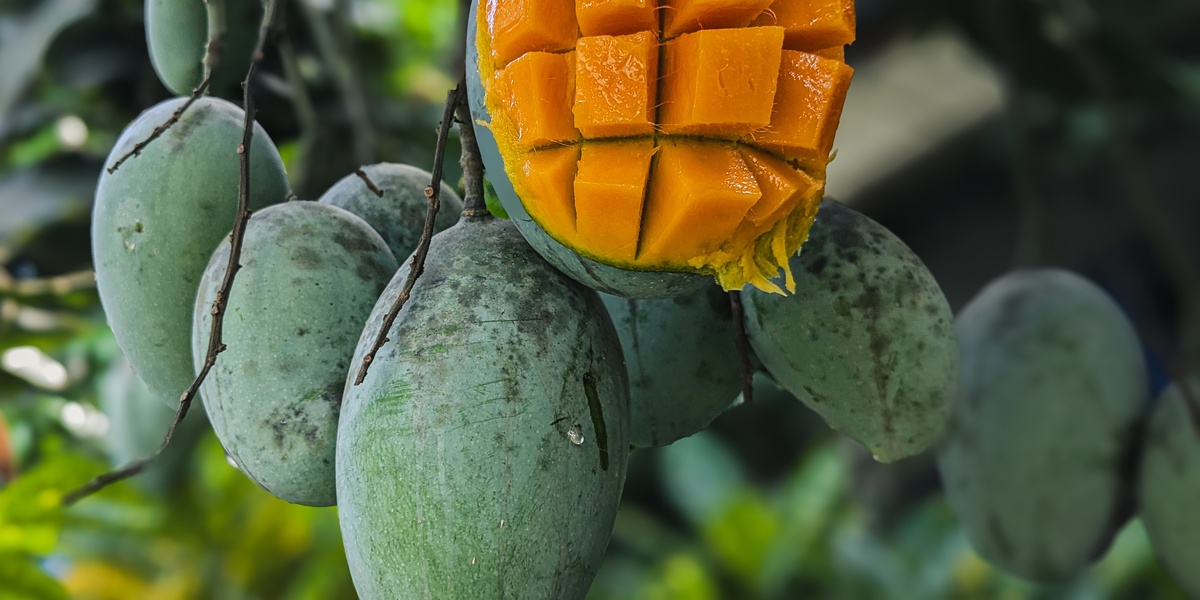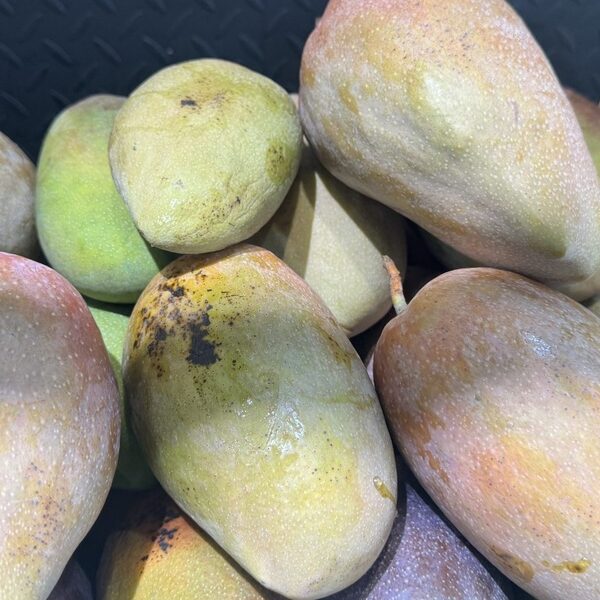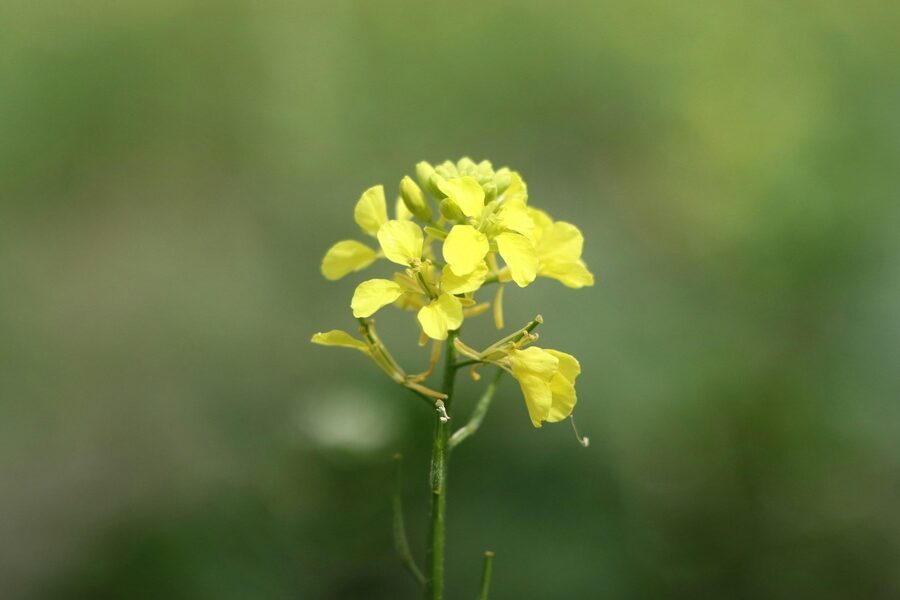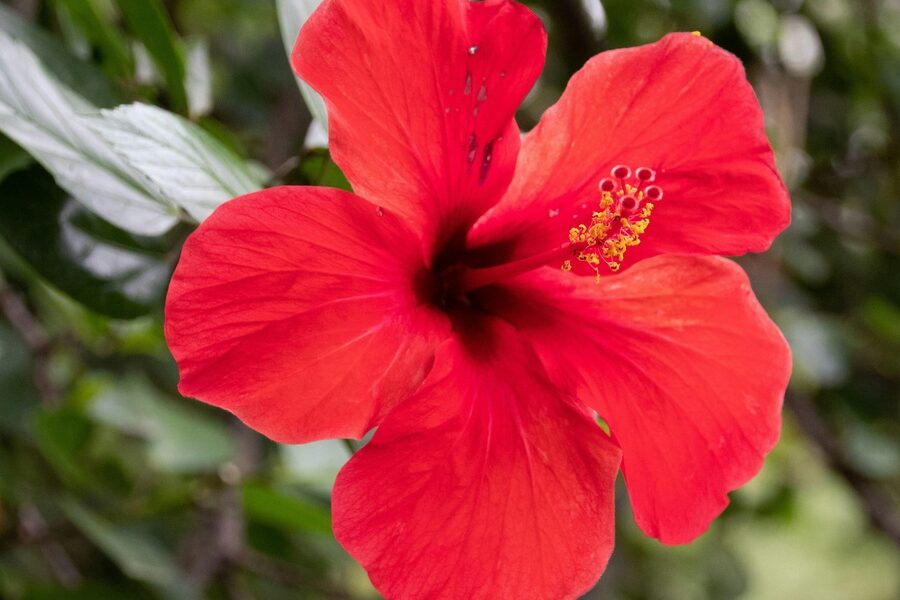From bustling city markets to quiet village orchards, India’s fruit scene is a mix of familiar favorites and regional specialties that shape local diets and traditions. Many fruits are deeply tied to seasonal festivals, street foods, and household recipes, so spotting them tells you a lot about place and time.
There are 66 Fruits of India, ranging from Ambarella to Wood Apple; for each entry you’ll find below the Scientific name, Main regions, Season (months) so you can quickly identify where a fruit grows and when it’s in season — you’ll find below the full list and details.
How can I use the season and region information to know when a fruit is available locally?
Use the Season (months) and Main regions columns to match what’s in season near you—fruits listed for your state and peak months are the easiest to find fresh. If a fruit is out of season locally, look for preserved forms (pickles, dried, or frozen) or visit specialty markets that import from regions where it’s still ripe.
Are any of these fruits hard to find outside India, and how can I try them?
Yes—several entries are largely regional and uncommon abroad; try ethnic grocery stores, Indian farmers’ markets, or restaurants that highlight regional cuisine. If fresh fruit isn’t available, search for preserved preparations and recipes (chutneys, jams, sweets) that capture the flavor, or ask local growers about trial planting if you want to grow them yourself.
Fruits of India
| Name | Scientific name | Main regions | Season (months) |
|---|---|---|---|
| Mango | Mangifera indica | Nationwide, especially Uttar Pradesh, Andhra Pradesh, Maharashtra | Mar–Jul |
| Banana | Musa spp. | Nationwide, especially Tamil Nadu, Maharashtra, Gujarat | Year-round |
| Jackfruit | Artocarpus heterophyllus | Kerala, Tamil Nadu, Karnataka, West Bengal, Maharashtra | Mar–Jun |
| Guava | Psidium guajava | Uttar Pradesh, Madhya Pradesh, Bihar, Maharashtra | Aug–Oct, Nov–Mar |
| Papaya | Carica papaya | Andhra Pradesh, Gujarat, Karnataka, Maharashtra | Year-round |
| Pineapple | Ananas comosus | West Bengal, Assam, Karnataka, Kerala | Mar–Jul |
| Watermelon | Citrullus lanatus | Uttar Pradesh, Andhra Pradesh, Karnataka, Tamil Nadu | Apr–Jul |
| Muskmelon | Cucumis melo | Uttar Pradesh, Punjab, Andhra Pradesh, Maharashtra | Apr–Jul |
| Orange | Citrus sinensis | Maharashtra, Andhra Pradesh, Punjab, Madhya Pradesh | Dec–Mar |
| Sweet Lime | Citrus limetta | Maharashtra, Andhra Pradesh, Tamil Nadu, Punjab | Jul–Nov |
| Lemon | Citrus limon | Gujarat, Andhra Pradesh, Maharashtra, Karnataka | Year-round |
| Pomegranate | Punica granatum | Maharashtra, Karnataka, Gujarat, Andhra Pradesh | Sep–Feb |
| Grapes | Vitis vinifera | Maharashtra, Karnataka, Tamil Nadu | Jan–May |
| Apple | Malus domestica | Himachal Pradesh, Jammu & Kashmir, Uttarakhand | Aug–Nov |
| Chikoo | Manilkara zapota | Karnataka, Gujarat, Maharashtra, Tamil Nadu | Jan–Feb, May–Jul |
| Amla | Phyllanthus emblica | Uttar Pradesh, Maharashtra, Tamil Nadu, Rajasthan | Oct–Apr |
| Jamun | Syzygium cumini | Maharashtra, Uttar Pradesh, Tamil Nadu, Gujarat | May–Jul |
| Litchi | Litchi chinensis | Bihar, West Bengal, Jharkhand, Punjab | May–Jun |
| Coconut | Cocos nucifera | Kerala, Tamil Nadu, Karnataka, Andhra Pradesh | Year-round |
| Custard Apple | Annona squamosa | Maharashtra, Gujarat, Andhra Pradesh, Karnataka | Sep–Dec |
| Ber | Ziziphus mauritiana | Rajasthan, Gujarat, Uttar Pradesh, Maharashtra | Dec–Mar |
| Fig | Ficus carica | Maharashtra, Gujarat, Karnataka, Tamil Nadu | May–Jun, Dec–Jan |
| Tamarind | Tamarindus indica | Tamil Nadu, Karnataka, Andhra Pradesh, Kerala | Feb–Apr |
| Bael | Aegle marmelos | Uttar Pradesh, Bihar, West Bengal, Odisha | May–Jul |
| Star Fruit | Averrhoa carambola | Kerala, Karnataka, Tamil Nadu, Maharashtra | Sep–Oct, Jan–Feb |
| Kokum | Garcinia indica | Western Ghats (Maharashtra, Goa, Karnataka) | Apr–May |
| Ice Apple | Borassus flabellifer | Tamil Nadu, Andhra Pradesh, Maharashtra, West Bengal | Apr–Jun |
| Phalsa | Grewia asiatica | Punjab, Uttar Pradesh, Haryana, Rajasthan | May–Jun |
| Karonda | Carissa carandas | Bihar, West Bengal, Rajasthan, Maharashtra | Jul–Sep |
| Mulberry | Morus spp. | Karnataka, Andhra Pradesh, Punjab, Himachal Pradesh | Mar–May, Oct–Nov |
| Strawberry | Fragaria ananassa | Maharashtra (Mahabaleshwar), Himachal Pradesh, West Bengal | Dec–Apr |
| Cape Gooseberry | Physalis peruviana | Nationwide in kitchen gardens | Sep–Nov |
| Cashew Apple | Anacardium occidentale | Goa, Maharashtra, Kerala, Karnataka | Mar–May |
| Dragon Fruit | Hylocereus undatus | Maharashtra, Gujarat, Karnataka, Kerala | Jun–Nov |
| Ramphal | Annona reticulata | Maharashtra, Gujarat, Assam, West Bengal | Mar–May |
| Mangosteen | Garcinia mangostana | Kerala, Tamil Nadu, Karnataka (Western Ghats) | Jun–Aug |
| Pear | Pyrus communis | Himachal Pradesh, Jammu & Kashmir, Punjab, Uttarakhand | Aug–Oct |
| Peach | Prunus persica | Himachal Pradesh, Uttarakhand, Punjab, Jammu & Kashmir | May–Jul |
| Plum | Prunus domestica | Himachal Pradesh, Uttarakhand, Jammu & Kashmir | May–Jul |
| Apricot | Prunus armeniaca | Ladakh, Himachal Pradesh, Jammu & Kashmir, Uttarakhand | May–Jul |
| Cherry | Prunus avium | Jammu & Kashmir, Himachal Pradesh, Uttarakhand | May–Jul |
| Date | Phoenix dactylifera | Gujarat (Kutch), Rajasthan, Tamil Nadu | Jul–Sep |
| Elephant Apple | Dillenia indica | Assam, West Bengal, Odisha, Bihar | Oct–Nov |
| Jungli Jalebi | Pithecellobium dulce | Tamil Nadu, Kerala, Maharashtra, Andhra Pradesh | Apr–Jun |
| Chironji | Buchanania lanzan | Madhya Pradesh, Jharkhand, Chhattisgarh, Maharashtra | Apr–May |
| Ambarella | Spondias dulcis | Tamil Nadu, Kerala, Karnataka, Goa | Oct–Jan |
| Langsat | Lansium domesticum | Southern India (Nilgiri Hills) | Jul–Aug |
| Barhal | Artocarpus lacucha | Uttar Pradesh, Bihar, West Bengal, Assam | May–Jul |
| Mahua | Madhuca longifolia | Odisha, Chhattisgarh, Jharkhand, Madhya Pradesh | Mar–Apr |
| Passion Fruit | Passiflora edulis | Kerala, Karnataka, Nagaland, Mizoram | May–Aug |
| Rambutan | Nephelium lappaceum | Kerala, Tamil Nadu, Karnataka | Jun–Aug |
| Pomelo | Citrus maxima | Assam, Tripura, West Bengal, Nagaland | Sep–Dec |
| Wood Apple | Limonia acidissima | Nationwide, especially in dry plains | Oct–Mar |
| Persimmon | Diospyros kaki | Himachal Pradesh, Jammu & Kashmir, Uttarakhand, Tamil Nadu (Hills) | Oct–Nov |
| Loquat | Eriobotrya japonica | Punjab, Uttar Pradesh, Himachal Pradesh, Maharashtra | Mar–May |
| Khirni | Manilkara hexandra | Gujarat, Rajasthan, Madhya Pradesh, Uttar Pradesh | May–Jun |
| Indian Almond | Terminalia catappa | Coastal regions of India | Year-round |
| Rose Apple | Syzygium jambos | Kerala, Tamil Nadu, Andhra Pradesh | May–Jul |
| Buddha’s Hand | Citrus medica var. sarcodactylis | Northeastern states, Southern India | Oct–Dec |
| Tamarillo | Solanum betaceum | Nilgiri Hills, Darjeeling, Northeastern states | May–Jul, Sep–Nov |
| Longan | Dimocarpus longan | West Bengal, Kerala, Tamil Nadu | Jul–Aug |
| Kiwi | Actinidia deliciosa | Himachal Pradesh, Arunachal Pradesh, Sikkim, Uttarakhand | Oct–Dec |
| Avocado | Persea americana | Sikkim, Tamil Nadu, Kerala, Karnataka | Jul–Sep |
| Soursop | Annona muricata | Kerala, Tamil Nadu, Karnataka | Jun–Sep |
| Breadfruit | Artocarpus altilis | Kerala, Karnataka, Tamil Nadu, Maharashtra | Jun–Aug |
| Water Chestnut | Eleocharis dulcis | West Bengal, Bihar, Uttar Pradesh, Odisha | Oct–Feb |
Images and Descriptions
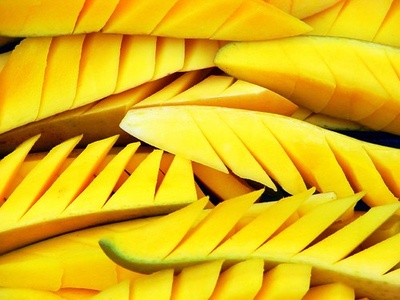
Mango
The undisputed “King of Fruits” in India, with a sweet, aromatic, and juicy pulp. It’s eaten fresh, juiced for ‘aamras’, or used in pickles and chutneys. Varieties like Alphonso, Kesar, and Dasheri are highly prized.
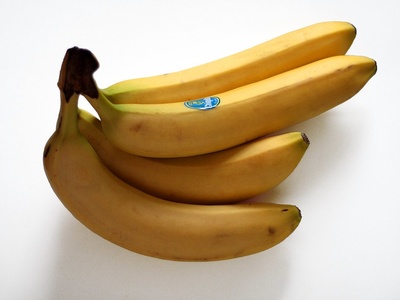
Banana
A ubiquitous, energy-rich staple available throughout the year. From sweet, small ‘elaichi’ bananas to larger ‘nendran’ for cooking, they are eaten ripe, used unripe in curries, or made into chips. Rich in potassium and dietary fiber.
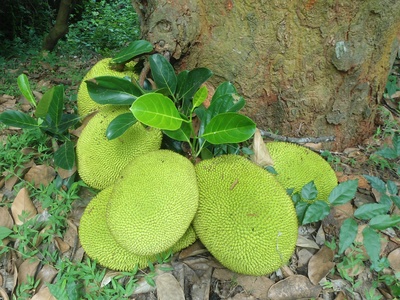
Jackfruit
The world’s largest tree fruit with a spiky green exterior. Ripe pods are sweet and fibrous with a unique aroma. Unripe jackfruit is famously used as a meat substitute in savory dishes like curries and biryanis.
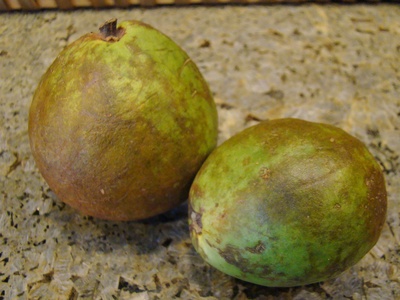
Guava
A fragrant tropical fruit with green skin and pink or white flesh filled with small, hard seeds. It has a sweet and slightly musky flavor. Eaten fresh with a sprinkle of salt and chili, or made into juices and jellies.
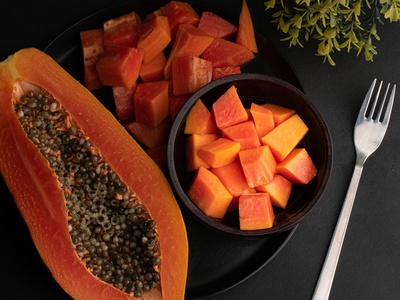
Papaya
A soft, butter-like fruit with orange flesh and black, peppery seeds. Known for its sweet taste and high content of vitamin C and the enzyme papain, which aids digestion. Eaten ripe or used unripe as a vegetable in salads and curries.
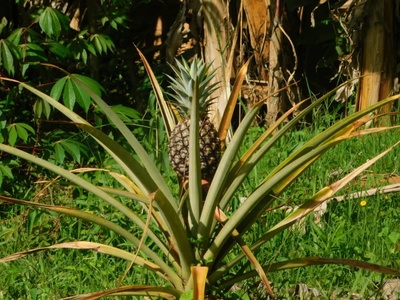
Pineapple
A tropical fruit with a tough, spiky exterior and sweet, tangy yellow flesh. It’s enjoyed fresh, juiced, or used in desserts and savory dishes. A great source of vitamin C and manganese.
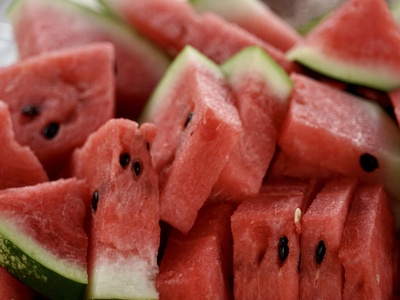
Watermelon
The ultimate summer thirst-quencher. This large, green-rinded melon has crisp, sweet, and incredibly juicy red flesh. Eaten fresh as slices to beat the heat, and its high water content makes it extremely hydrating.
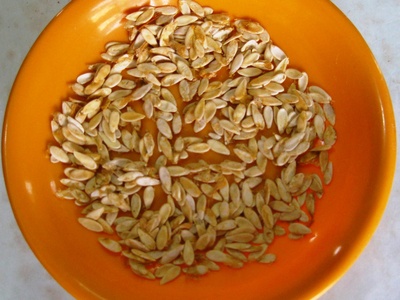
Muskmelon
Also known as Kharbuja, this melon has a netted skin and fragrant, sweet, pale orange flesh. It’s a popular summer fruit, eaten fresh or blended into refreshing drinks. Its seeds can also be dried and eaten.
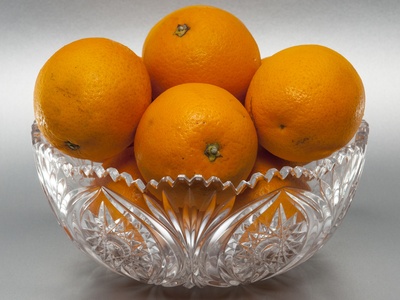
Orange
The classic Nagpur orange is a winter favorite, known for its sweet and tangy juice. It’s peeled and eaten fresh or squeezed for juice, providing a rich dose of Vitamin C to boost immunity during colder months.
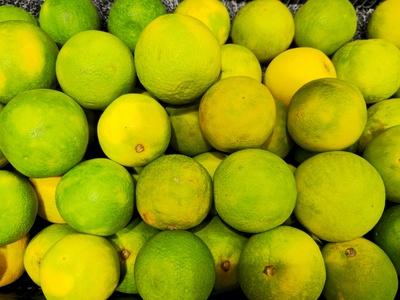
Sweet Lime
Known as Mosambi, this citrus fruit has a mild, sweet flavor with very low acidity. Its juice is one of India’s most popular street-side beverages, often served with a pinch of black salt (kala namak).
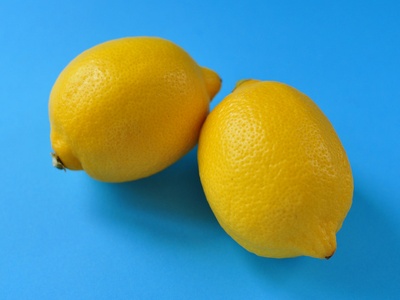
Lemon
A kitchen essential used more as a souring agent than a fruit. Varieties like ‘Kagzi’ are prized for their juice, which is used in lemonade (nimbu pani), pickles, and to add a tangy finish to countless Indian dishes.
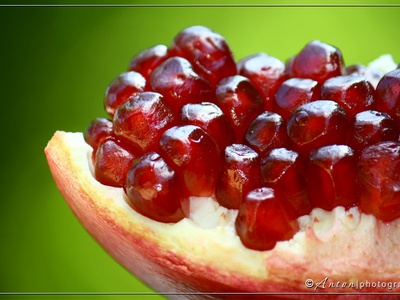
Pomegranate
Prized for its jewel-like, ruby-red seeds (arils) that are both sweet and tart. Eaten fresh, sprinkled over salads and yogurt, or juiced. It is packed with antioxidants and considered a symbol of health and prosperity.
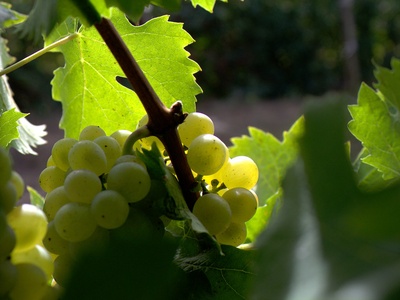
Grapes
Grown extensively in regions like Nashik, the “Grape Capital of India.” Available in green, black, and red varieties, they are enjoyed as a sweet and juicy table fruit or used for making raisins and wine.
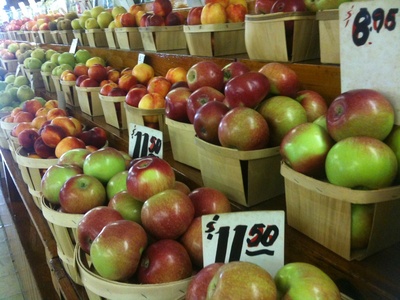
Apple
Primarily grown in the Himalayan states, Indian apples are crisp, sweet, and juicy. Varieties like the Shimla and Kashmiri apples are popular nationwide. A healthy snack, rich in fiber and beneficial flavonoids.
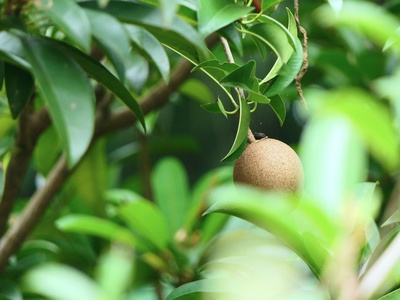
Chikoo
Also known as Sapota, this fruit has a grainy, pear-like texture and a unique, malty sweetness. Its brown, fuzzy skin encloses a soft, brownish pulp. Often eaten fresh or blended into delicious milkshakes.

Amla
The Indian Gooseberry is a small, translucent green fruit with a potent sour and astringent taste. It is a vitamin C powerhouse, rarely eaten raw but widely used in pickles, preserves (murabba), and Ayurvedic remedies.
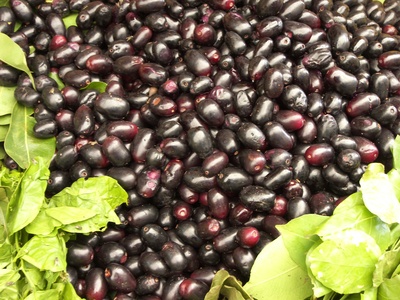
Jamun
Also known as Java Plum, this deep purple berry has a unique sweet, sour, and astringent flavor that stains the tongue. A monsoon favorite, it is eaten with salt or used in juices and is noted for its health benefits.
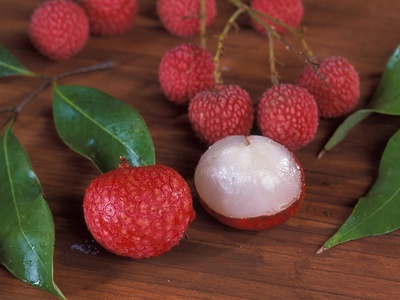
Litchi
A fragrant summer fruit with rough, reddish-pink skin that peels away to reveal a sweet, juicy, translucent white flesh surrounding a single seed. Muzaffarpur in Bihar is especially famous for its delicious litchis.
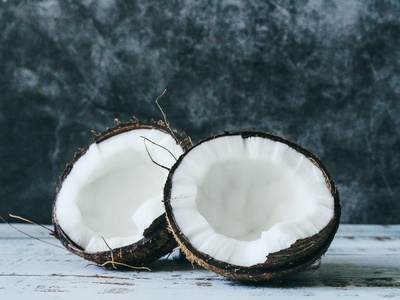
Coconut
A versatile coastal staple. The tender coconut water is a refreshing drink, while the soft white flesh (malai) is eaten raw. Mature coconut is grated and used extensively in South Indian and coastal cooking for its rich flavor.

Custard Apple
Known as Sitaphal, this fruit has a knobby green exterior and a sweet, creamy, fragrant white pulp with many black seeds. The pulp is scooped out and eaten, loved for its unique texture and delicious taste.
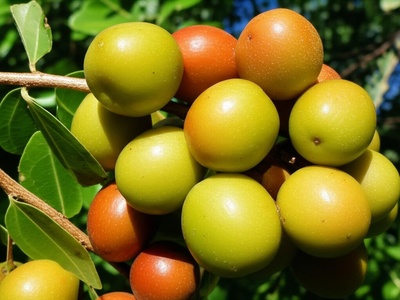
Ber
The Indian Jujube is a sweet and tart fruit, ranging from greenish-yellow to reddish-brown. It has a crisp texture similar to an apple when fresh and is also dried. It is rich in Vitamin C and very popular in rural areas.

Fig
Known as Anjeer, this fruit has a soft, chewy texture and a sweet, mild flavor with many tiny seeds. It is eaten both fresh and dried. The Poona and Dinkar varieties are popular in India.
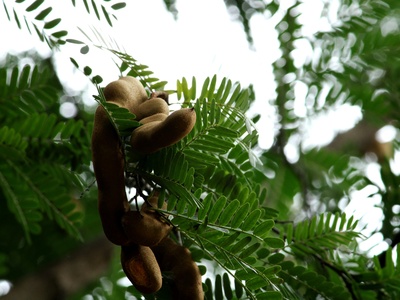
Tamarind
A pod-like fruit with a tangy, sour-sweet pulp. While the ripe pulp can be eaten as a candy-like treat, it is most commonly used as a souring agent in South Indian curries, chutneys, and sharbat.
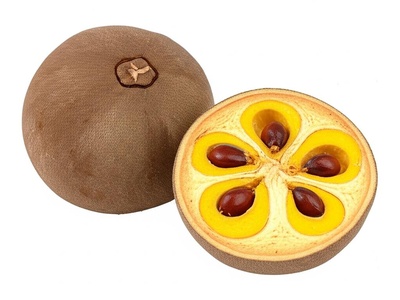
Bael
Also called Wood Apple, this fruit has a hard, woody shell. Its fragrant, yellow pulp is tangy and sweet. It’s famously made into a cooling summer sherbet and is highly valued in Ayurveda for its digestive benefits.
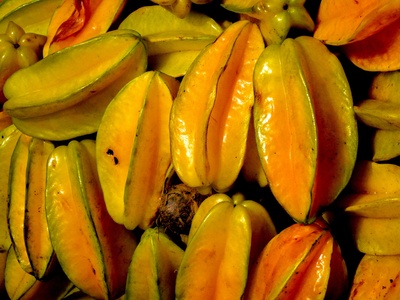
Star Fruit
Named for the perfect star shape it forms when cut crosswise. This waxy, yellow-green fruit is crisp and juicy, with a tart, citrus-like flavor. It is eaten fresh, juiced, or used as a garnish.
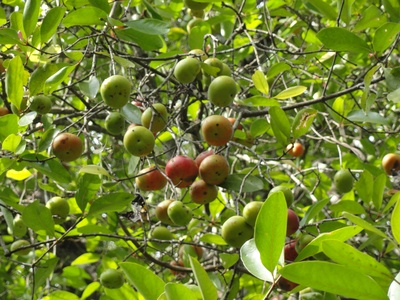
Kokum
A small, deep-purple fruit from the mangosteen family. Its dried rind is a popular souring agent in coastal cuisine. The fruit is also used to make a refreshing, bright red, tangy drink called ‘kokum sherbet’.
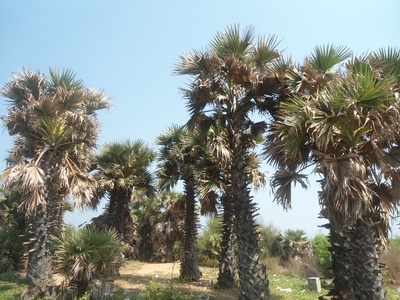
Ice Apple
Known as Tadgola or Nungu, this is the jelly-like seed of the Palmyra palm. It contains a pocket of cool, sweet water within its translucent flesh, making it a beloved and hydrating summer delicacy.
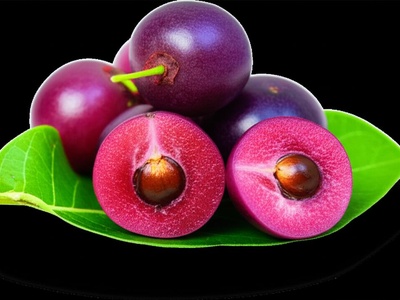
Phalsa
A tiny, dark purple berry with a delightful sweet-and-sour taste. It is mostly consumed as a refreshing juice or sherbet, which is a popular remedy for heatstroke. The fruit itself has a large seed and little pulp.
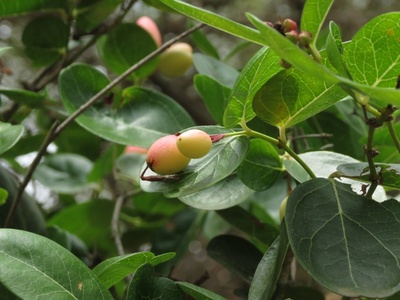
Karonda
A small, berry-like fruit that is very sour when raw and mildly sweet when fully ripe. Its crunchy texture and tartness make it perfect for making tangy pickles and sweet preserves (murabba).
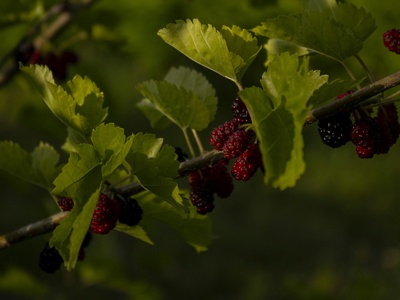
Mulberry
Known as Shahtoot, these berries grow in elongated clusters and can be red, black, or white. They are sweet and mildly tart, enjoyed fresh off the tree. They have a very short shelf life.
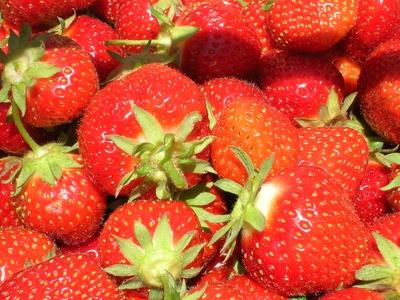
Strawberry
While not native, strawberries are widely cultivated in hill stations. These bright red, heart-shaped berries are sweet and slightly tart. They are a popular treat eaten fresh, with cream, or in jams and desserts.
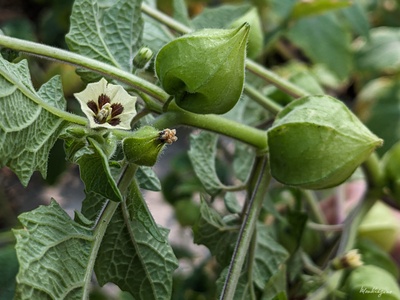
Cape Gooseberry
Known as Rasbhari, this small, orange berry is enclosed in a papery husk. It has a unique sweet-tart flavor, reminiscent of a tomato and a pineapple. Often eaten raw or used in salads and jams.
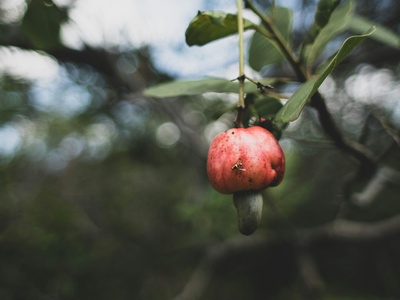
Cashew Apple
The juicy, pear-shaped fruit to which the cashew nut is attached. It has a sweet, astringent taste and a strong aroma. It is often juiced or fermented to make a popular Goan liquor called Feni.
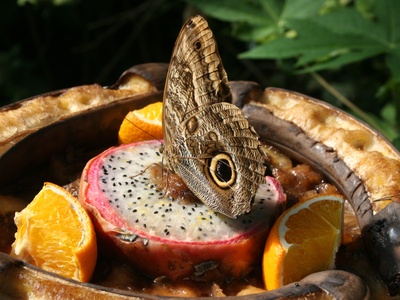
Dragon Fruit
With its vibrant pink skin and green scales, this exotic fruit is a visual stunner. The flesh, either white or pink with tiny black seeds, is mildly sweet and has a texture like a kiwi. Gaining popularity across India.
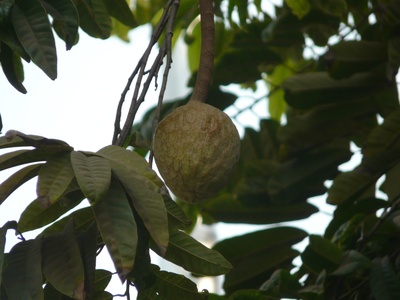
Ramphal
A relative of the custard apple, also known as Bullock’s Heart. It has smoother, reddish-brown skin and a creamy, sweet pulp that is less grainy than its cousin. Its flavor is sweet with a hint of tartness.
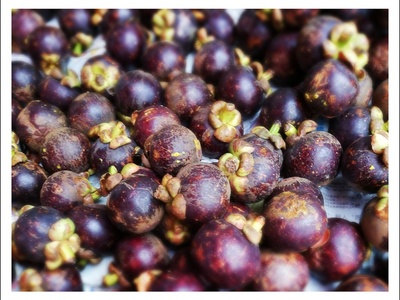
Mangosteen
Hailed as the “Queen of Fruits,” it has a thick, purple rind that opens to reveal fragrant, snow-white segments of sweet and tangy flesh. A prized delicacy with a short season, found mainly in the southern states.
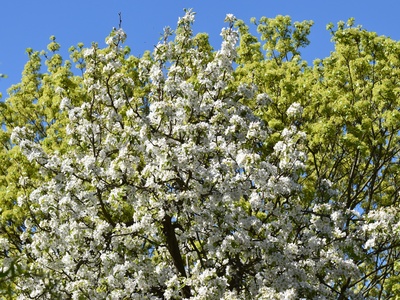
Pear
Called Nashpati in Hindi, Indian pears are typically crisp, crunchy, and juicy with a mild, sweet flavor. They are a refreshing monsoon and autumn fruit, enjoyed fresh or in salads.
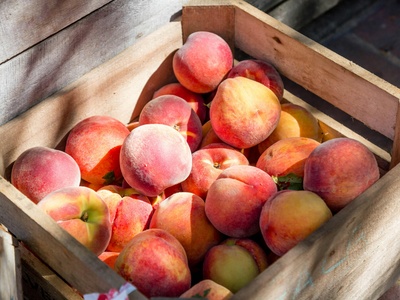
Peach
Known as Aadu, these fuzzy-skinned fruits from the hills have a sweet, aromatic flavor. Their soft, juicy flesh is delicious when eaten fresh and is also used for making squashes and preserves.
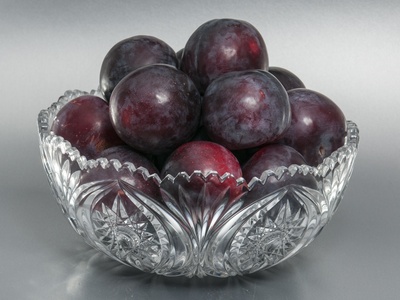
Plum
Called Aloo Bukhara, these small, round fruits have a sweet and tart flavor with smooth skin that can be red, purple, or yellow. They are enjoyed fresh or dried as prunes.
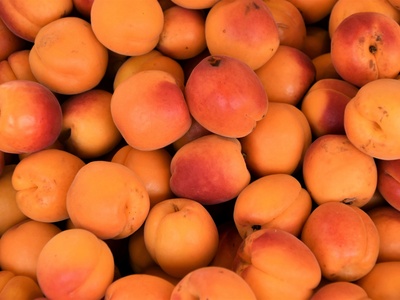
Apricot
A small, golden-orange fruit with a velvety skin. Fresh apricots from the Himalayan region are sweet and slightly tart. They are also famously sun-dried in Ladakh, becoming a staple known as ‘chulli’.
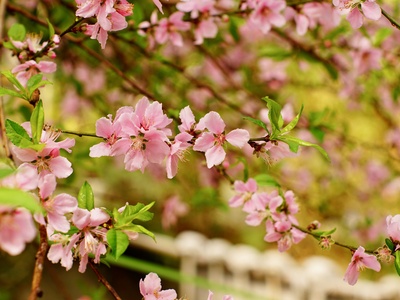
Cherry
Grown in the temperate climates of the Himalayas, these sweet or tart red jewels are a seasonal treat. They are enjoyed fresh during their short summer season and are a good source of antioxidants.

Date
While mostly consumed in their dried form, fresh dates (khajoor) are soft, sweet, and sticky. They are an excellent source of natural energy, fiber, and essential minerals. The Kutch region is becoming a major hub for cultivation.

Elephant Apple
Known as Chalta, this large, greenish-yellow fruit has a sour, crunchy, and gelatinous pulp. It is not typically eaten raw but is used to make tangy curries, dals, pickles, and chutneys in Eastern India.
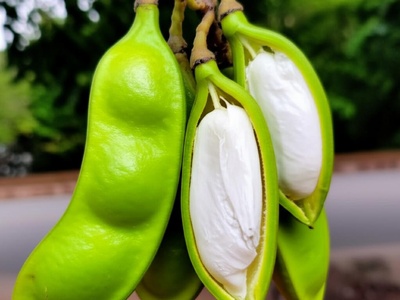
Jungli Jalebi
Also known as Manila Tamarind, these spiraled pods contain a white, pulpy fruit with a unique sweet and sour flavor, resembling a jalebi. It is a popular roadside snack, especially in South India.
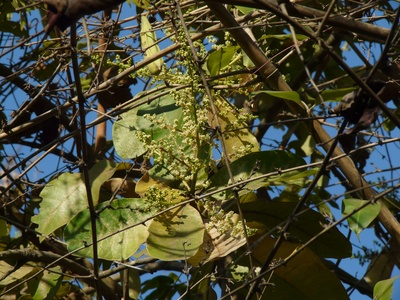
Chironji
The fruit is an edible drupe, but it is the small, nutty seed inside (chironji) that is highly prized. The seed tastes like an almond and is used in Indian sweets and savory dishes. The ripe fruit is also foraged and eaten.
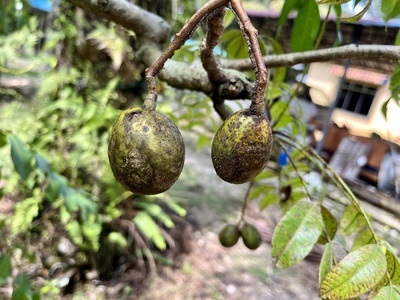
Ambarella
Also known as Indian Hog Plum or June Plum. This crunchy, green fruit has a tart, tangy flavor that sweetens as it ripens. It is eaten fresh with salt and chili powder, or used in pickles and chutneys.
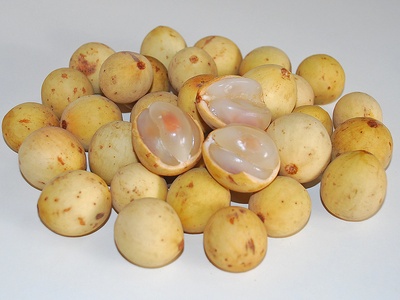
Langsat
A small, round fruit that grows in clusters, with a yellowish, thin skin. The translucent, juicy flesh is divided into segments and has a sweet-tart, grapefruit-like flavor. A rare find in specific southern regions.
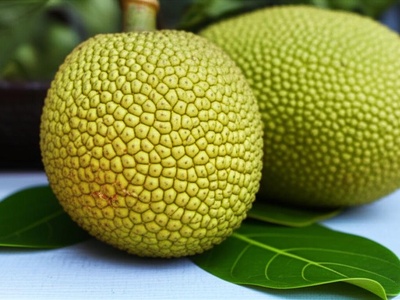
Barhal
Also called Monkey Jack, this relative of jackfruit is a lumpy, greenish-yellow fruit with a sour, tangy pulp. It’s often used to make pickles and chutneys and is a foraged favorite in rural North and East India.
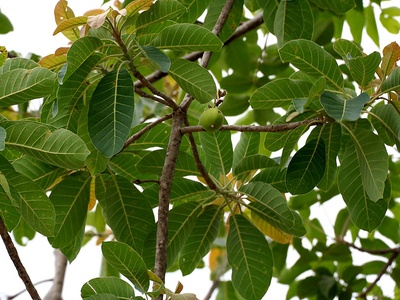
Mahua
The sweet, fleshy flowers of the Mahua tree are consumed as a fruit. They are eaten fresh, dried, or used to produce a popular and potent local liquor. A vital source of nutrition for tribal communities.
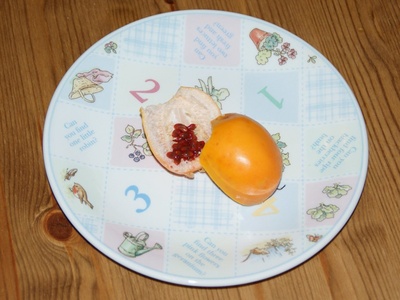
Passion Fruit
A round or oval fruit with a tough outer rind, filled with a juicy, seed-filled pulp. It has an intense, aromatic, and tangy-sweet flavor. The pulp is scooped out and eaten or used in juices, desserts, and sauces.
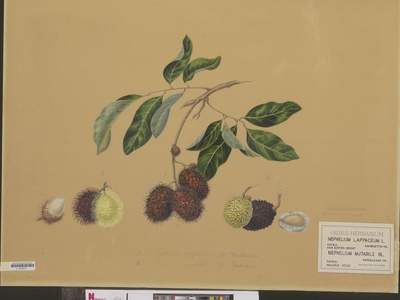
Rambutan
A close relative of the litchi, this exotic fruit is covered in soft, hairy red spines. Inside, the translucent white flesh is sweet, juicy, and slightly acidic, clinging to a central seed.
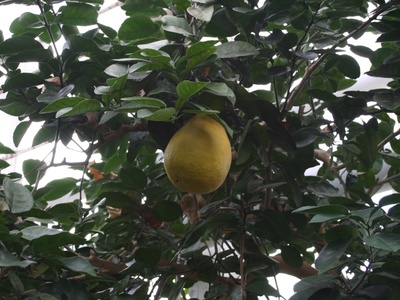
Pomelo
The largest citrus fruit, with a very thick, soft rind. The flesh can be pink or pale yellow and is sweeter and less bitter than grapefruit. It is eaten fresh, often with a sprinkle of salt and pepper.
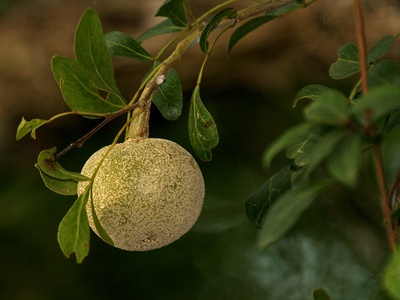
Wood Apple
Distinct from Bael, this is known as Kaitha. It has a very hard, wood-like shell and a sticky, brown, aromatic pulp with a unique sour and funky flavor. It is often made into chutneys and drinks.
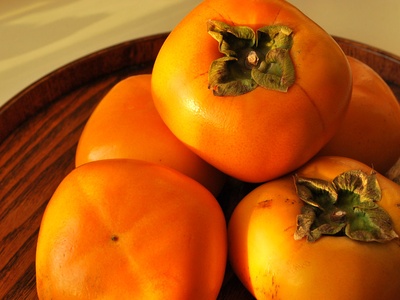
Persimmon
A tomato-shaped, glossy orange fruit. When ripe, it is incredibly sweet, with a smooth, honey-like flavor and jelly-like consistency. It should only be eaten when fully soft to avoid an astringent taste.
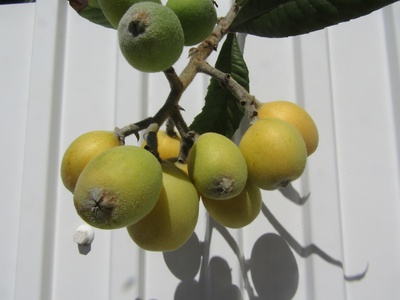
Loquat
A small, oval, yellow-orange fruit that grows in clusters. It has a sweet and tangy flavor, reminiscent of a plum, apricot, and cherry combined. Eaten fresh, it’s a refreshing spring delicacy.
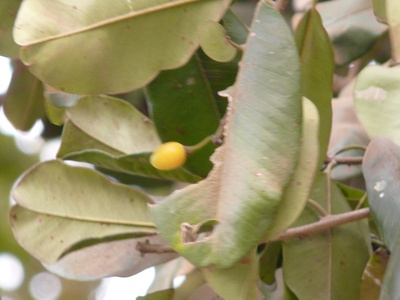
Khirni
A small, yellow, berry-like fruit, also known as Rayan. It is exceptionally sweet with a milky, slightly chewy texture. A seasonal delicacy that is foraged or found in local markets for a very short period.
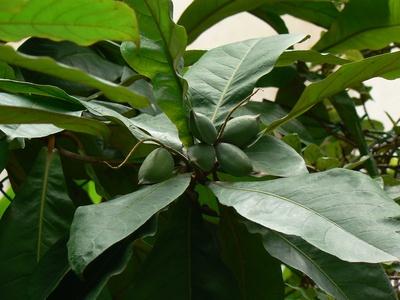
Indian Almond
The fruit of the Jangli Badam tree has a fibrous, slightly sweet-tart pulp that is edible. However, it is the almond-like seed inside the hard stone that is more popular, eaten raw or roasted.
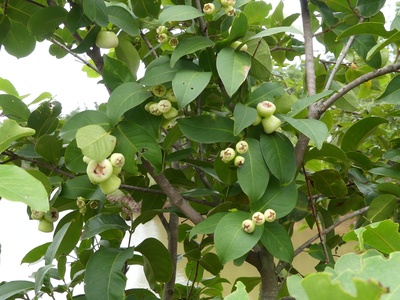
Rose Apple
A bell-shaped, waxy fruit that can be whitish-green or pink. It has a crisp, watery texture similar to a water chestnut and a mild, sweet flavor with a distinct rose-like aroma.
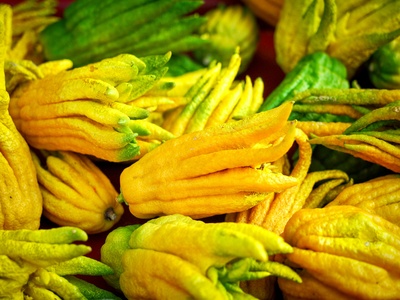
Buddha’s Hand
A bizarre-looking citrus fruit segmented into finger-like sections. It contains no juice or pulp but has a wonderfully strong, sweet, lavender-like fragrance. The zest is used to flavor dishes, desserts, and liquors.
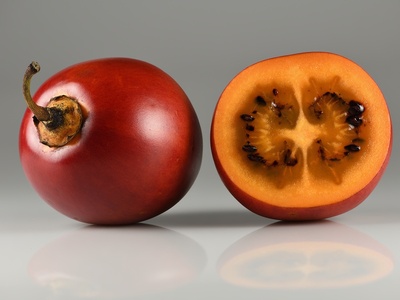
Tamarillo
Also known as the Tree Tomato, this egg-shaped fruit has a tangy and sweet-tart flavor. Its skin is bitter, but the juicy pulp is used in juices, chutneys, and salads. It is rich in vitamins and antioxidants.
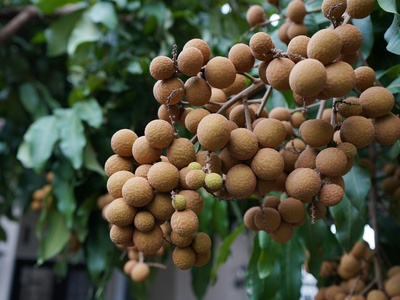
Longan
A relative of the litchi, this fruit is smaller with a smooth, brown, brittle skin. The translucent flesh is sweet and musky. It’s often called “dragon’s eye” because of the black seed showing through the flesh.
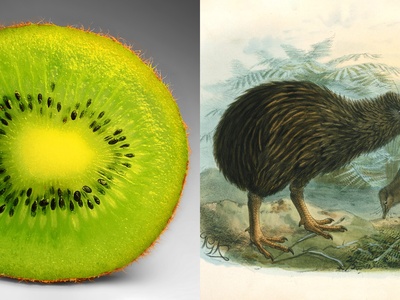
Kiwi
This fuzzy brown fruit with vibrant green flesh and tiny black seeds is now cultivated in India’s cooler regions. Its unique sweet-tart flavor makes it a popular choice for fresh consumption, salads, and desserts.
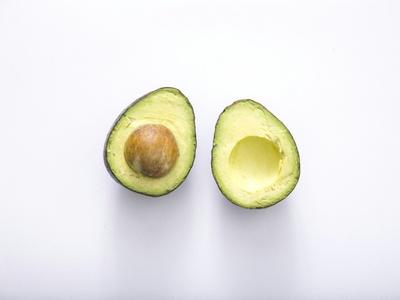
Avocado
Gaining immense popularity, avocados (or butter fruit) are cultivated in specific regions. With a creamy, buttery texture and a mild, nutty flavor, they are used in smoothies, salads, and spreads rather than eaten as a sweet fruit.
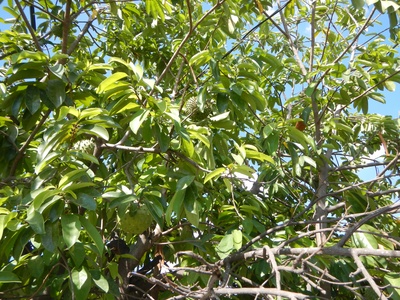
Soursop
Known as Lakshman Phal, this large, spiky green fruit has a creamy, white, fibrous pulp. Its flavor is a unique combination of strawberry, pineapple, and citrus, with a tangy undertone. Often consumed as a juice for its health benefits.
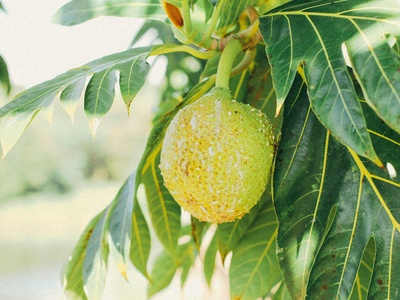
Breadfruit
A relative of jackfruit, this large, round, green fruit has a starchy, potato-like texture. It is eaten as a vegetable when unripe, typically boiled, fried, or curried. It is a staple in many coastal cuisines.
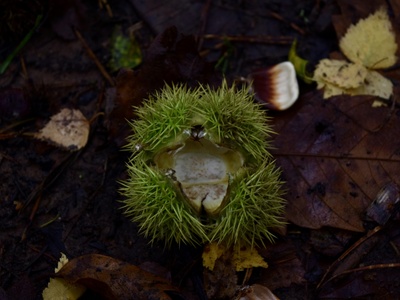
Water Chestnut
Known as Singhara, this is an aquatic vegetable eaten like a fruit. It has a crisp, white flesh with a mildly sweet, nutty flavor. It’s enjoyed raw, boiled, or its flour is used for fasting foods.
